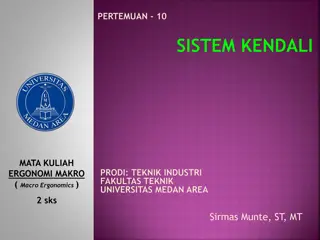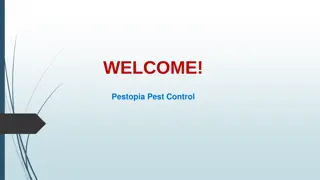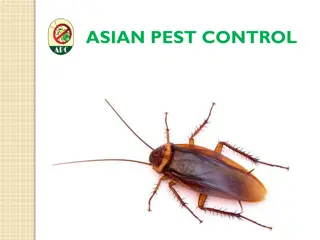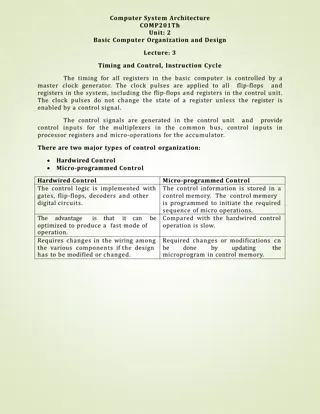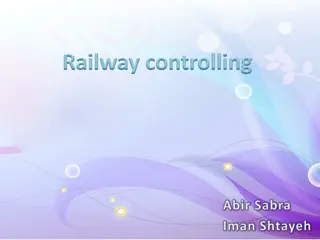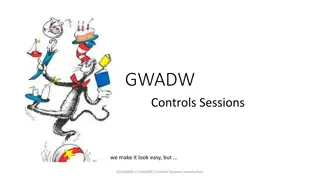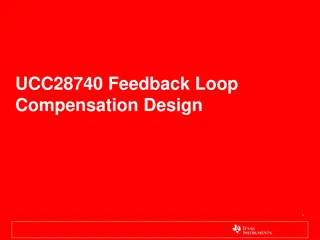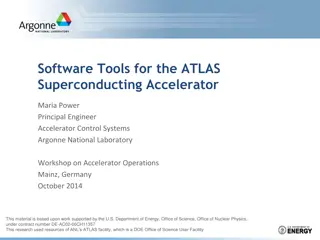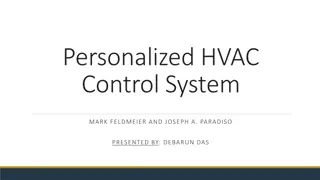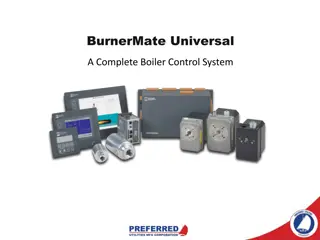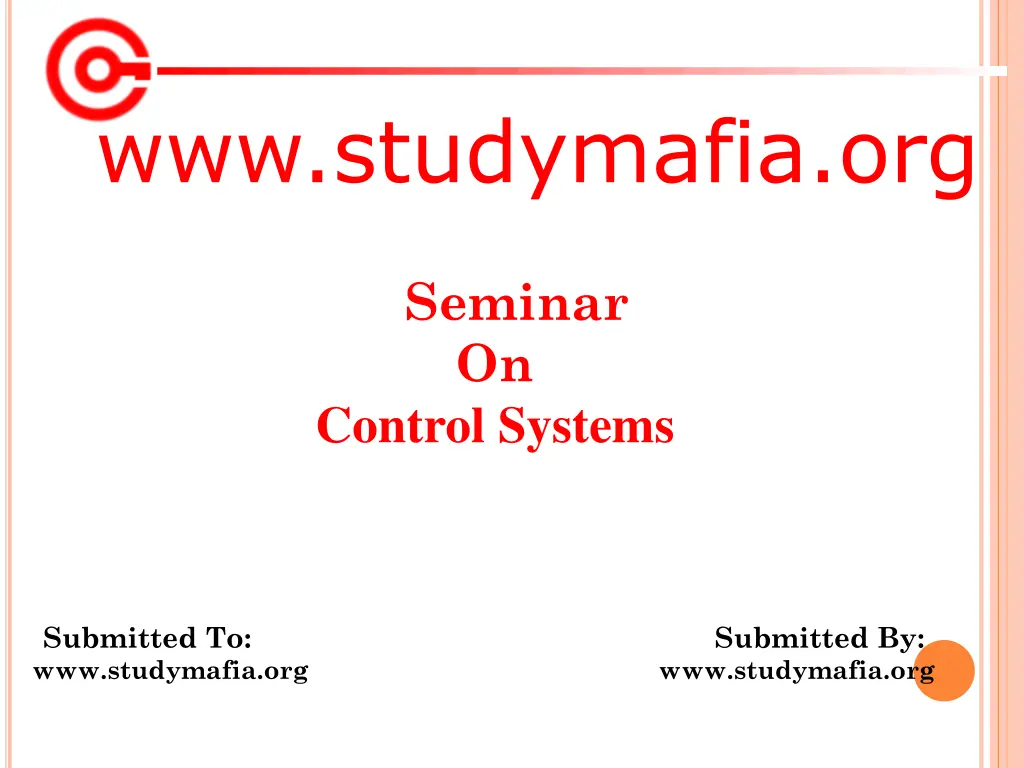
Understanding Control Systems: Components, Types, and Examples
Explore the world of control systems with an in-depth look at its definition, components, types (open-loop and closed-loop), and practical examples. Gain insights into how control systems work and their applications in various fields.
Download Presentation

Please find below an Image/Link to download the presentation.
The content on the website is provided AS IS for your information and personal use only. It may not be sold, licensed, or shared on other websites without obtaining consent from the author. If you encounter any issues during the download, it is possible that the publisher has removed the file from their server.
You are allowed to download the files provided on this website for personal or commercial use, subject to the condition that they are used lawfully. All files are the property of their respective owners.
The content on the website is provided AS IS for your information and personal use only. It may not be sold, licensed, or shared on other websites without obtaining consent from the author.
E N D
Presentation Transcript
www.studymafia.org Seminar On Control Systems Submitted To: www.studymafia.org www.studymafia.org Submitted By:
CONTENT Introduction Definition Components of Control System Types of Control Systems Open loop control systems Closed loop control system Examples of Control Systems Reference
INTRODUCTION Acontrol system is a control system for a process or plant, wherein control elements are distributed throughout the system. This is in contrast to non-distributed systems, which use a single controller at a central location. In a DCS, a hierarchy of controllers is connected by communications networks for command and monitoring.
DEFINITION It means by which a variable quantity or set of variable quantities is made to conform to a prescribed norm. It either holds the values of the controlled quantities constant or causes them to vary in a prescribed way. A control system may be operated by electricity, by mechanical means, by fluid pressure (liquid or gas), or by a combination of means. When a computer is involved in the control circuit, it is usually more convenient to operate all of the control systems electrically, although intermixtures are fairly common.
BASIC COMPONENTSOF CONTROL SYSTEM Plant Feedback Controller Error detector
Plant: The portion of a system which is to be controlled or regulated is called as plant or process. It is a unit where actual processing is performed and if we observe in the above figure, the input of the plant is the controlled signal generated by a controller. Feedback: It is a controlled action in which the output is sampled and a proportional signal is given to the input for automatic correction of any changes in the desired output. The output is given as feedback to the input for correction i.e. information about output is given to input for correcting the changes in output due to disturbances. The feedback signal is fed to the error detector.
Error Detector: The function of error detector is to compare the reference input with the feedback signal. It produces an error signal which is a difference of two inputs which are reference signal and a feedback signal. The error signal is fed to the controller for necessary controlled action. Controller: the element of a system within itself or external to the system which controls the plant is called as a controller. The error signal will be a weak signal and so it has to be amplified and then modified for better control action. In most of the systems, the controller itself amplifies the error signal and integrates or differentiates to generate a control signal.
Types of Control Systems Open loop control systems Closed loop control system Open loop control systems PROCE SS OUTPUT INPUT
OPEN LOOP CONTROL SYSTEM In open loop control system we have a process which we have to control and some input to change the process and out put. We have an example of a tank level control Hi level switch Start/ stop lo level switch
OPENLOOPCONTROL In open loop control system when we start the pump it will continue fill the fluid in the tank but at a time tank will overflow still pump will not stop. In open loop control we have no feedback that what is going on in process. We have to manually control the pump by putting a man at near the tank .He will see that if the high level switch glow then he will stop the pump and if lo level will glow then he will start the pump.
ADVANTAGESOF OPEN LOOP SYSTEM The open loop systems are simple and economical. They are easier to construct. The open loop systems are stable.
DISADVANTAGESOF OPEN LOOP SYSTEM The open loop systems are inaccurate and unreliable. The changes in the output due to external disturbances are not corrected automatically.
CLOSEDLOOPCONTROL Closed loop control system have information about the change in process with respect to change in input. Now consider the previous example in open loop control system. Start/ stop Hi level switch lo level switch Cont rol syste m
CLOSELOOPCONTROLSYSTEMBLOCK DIAGRAM Block diagram Contr oller Process OUTPUT INPUT FEEDBACK
CLOSEDLOOPCONTROL In open loop control system when we start the pump we have no status of the tank level but in closed loop control we have status of tank level and if tank level goes below, low level switch act and the pump will start by controller. In second case if the tank level goes high then the high level switch act and controller stop the pump. Hence the difference between the open loop and closed loop control system
ADVANTAGESOF CLOSED LOOP SYSTEM Closed loop systems are accurate. They are accurate even in the presence of nonlinearity. They are more stable. They are less affected by noise.
DISADVANTAGESOF CLOSED LOOP SYSTEM They are complex and expensive. The feedback in closed loop system may leave to oscillatory response. More care is needed to design a closed loop system. The overall gain of the system is reduced due to feedback.
EXAMPLESOF CONTROL SYSTEMS Distinct examples of control systems are as follows: Liquid level control system Room temperature control system Traffic control system Home heating systems
REFERENCES www.google.com www.wikipedia.com www.studymafia.org



